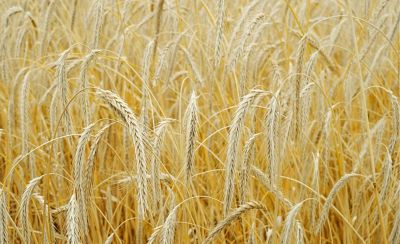Heed the Warning Signs - Your Future Self Will Be Grateful

IIf your existing cereal fungicides are working as they should, and you’re not yet convinced you need to take action to manage resistance, maybe it’s time to look at what chemistry cereal growers use – or can no longer use – overseas.
“We’re starting to see greater awareness about resistance as a whole in the New Zealand arable sector, and that’s great,” says Glen Surgenor, national marketing manager for Corteva Agriscience.
“But what we’re not seeing is growers taking the next step and adopting programmes are really going to help protect our existing fungicide chemistry.
“Some are probably still looking at this in terms of cost only, and others may not realise the full extent of the risk because they’re using a fair bit of chemistry that still works.
“No-one gets too worried when their sprays are still effective, but in fact that’s actually the critical time to review your current programme and make the changes necessary to ensure it remains sustainable in future years.”
Failure of any chemical group to fully control target pathogens because of resistance happens quickly, Glen says: “All you have to do is compare today’s cereal fungicide programmes in the UK and Europe to the programmes those growers were using five years ago.”
It’s all about taking a strategic approach, informed by up to date trends observed in NZ.
“We’re starting to see a shift in Septoria sensitivity to existing chemistry so the industry needs to incorporate new modes of action into those programmes before full resistance develops, and good chemistry is lost.”
“SDHI’s (Group 7) have been a market standard for the past decade, and we can’t afford to break them.”
He’s referring to ongoing Foundation for Arable Research monitoring, supported by all major crop protection suppliers, which tracks the sensitivity of NZ Septoria strains to fungicides with different modes of action.
Most recent testing suggests small sensitivity shifts in the SDHI fungicides, although they currently remain effective.
FAR data identify the biggest sensitivity shifts are in DMI (Group 3) fungicides, including significant changes for epoxiconazole and prothioconazole.
Glen says the value of such monitoring lies in giving NZ growers early warning of what might be coming.
“Unlike in the United Kingdom, for example, where they no longer have access to some SDHI technology because of resistance, we have time to protect what we have. But to do so, we can’t just keep doing the same thing we’ve always done.”
Cue Questar, with its unique active ingredient Inatreq. This is the first member of a new class of cereal fungicides, the picolinamides (Group 21), which have a different target site to all other fungicides currently applied for Septoria control in wheat.
Questar is the first naturally derived fungicide brought to market by Corteva Agriscience; Inatreq is produced by fermentation of a naturally-occurring soil bacterium first discovered at Osaka University in Japan.
It’s been winning support since Corteva launched it three years ago, but should be strategically integrated into more programmes as a critical circuit breaker to protect existing chemistry, Glen says
It has no cross resistance to existing fungicides in the wheat market, and is highly efficacious, making it invaluable for resistance management strategies.
It’s also flexible in terms of application timing - up to T3 – although most applications will be at T1 or T2 which are the most important fungicide timings for Septoria control.
But again, it must also be used with care.
“We’re strongly recommending only one Questar application per season, which will help protect Questar from the development of resistance, and also make the most of this new MOA in slowing resistance to other fungicide groups,” Glen says.
“We very much want to be part of a responsible resistance management strategy for all fungicides for Septoria and other cereal disease control.”
Maintaining the efficacy of current fungicides requires careful management, which includes using different modes of action like Questar, applying the correct rates at the right time and growing Septoria tolerant wheat.
Questar is registered in NZ for both conventional ground and aerial application, and is available in a 7.5 L pack.

Questar with Inatreq active is a foliar applied fungicide for the control of speckled leaf blotch (Septoria tritici) in wheat.
Download the complete manual
Questar with Inatreq active is a foliar applied fungicide for the control of speckled leaf blotch (Septoria tritici) in wheat.
Download the tech sheet
We are committed to the cereals market by developing new products to fight the most challenging weeds and pests.
Learn more